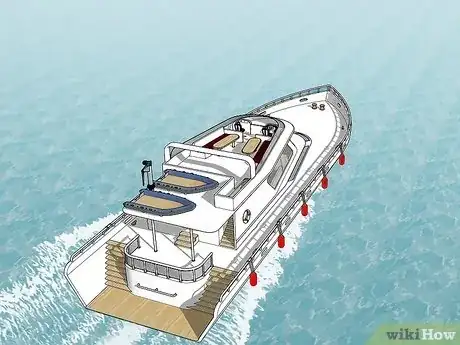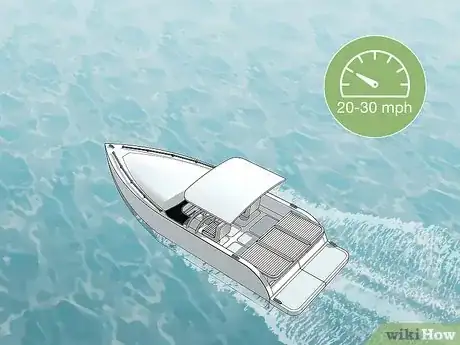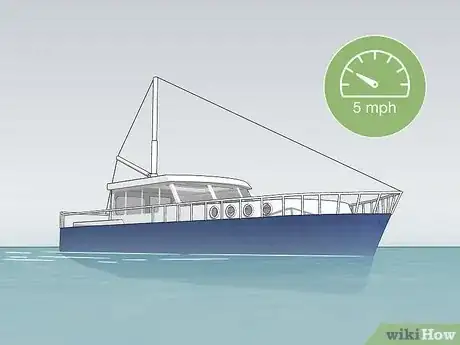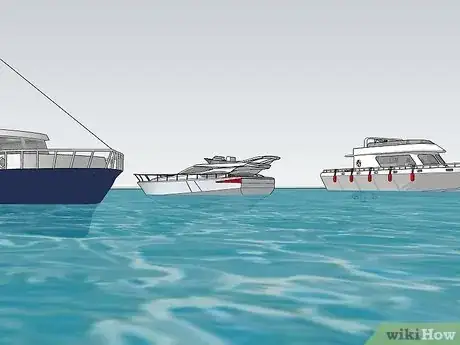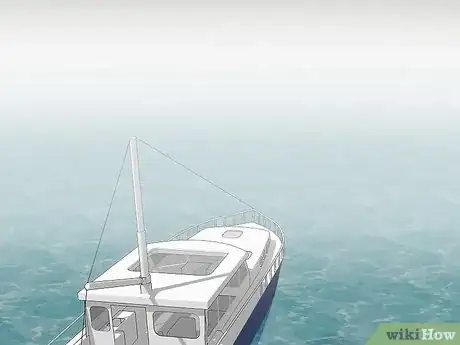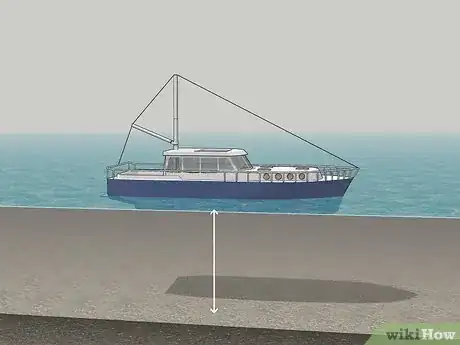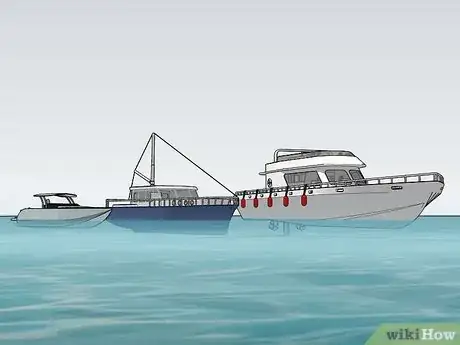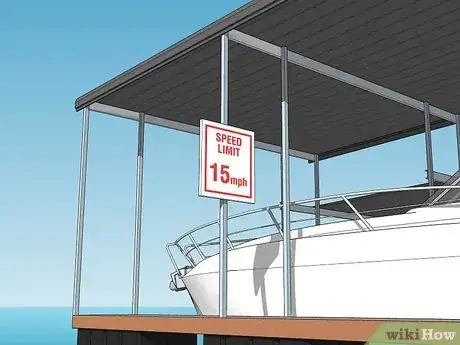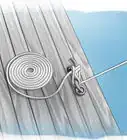This article was co-authored by Travis Lund and by wikiHow staff writer, Eric McClure. Travis Lund is the General Manager at the Vallejo Marina, a large marina located between the San Francisco Bay and the Delta in California. Sailing since he was six-years-old, Travis has over 15 years working in sailing operations and instruction and has pioneered a coaching platform that combined traditional coaching with multi-camera video support. He studied English at Michigan State University, where he was on the sailing team.
There are 7 references cited in this article, which can be found at the bottom of the page.
If you’re taking a boat out and there’s no speed limit sign in sight, you may be wondering just how fast you can (or should) go. While it can be tempting to get out on the water and put the pedal to the medal, staying safe is paramount on the water, and that means you need to maintain a reasonable speed. In this article, we’ll take a closer look at what accounts for “reasonable” so that you can make safe and informed decisions on the water.
Things You Should Know
- There is no universal speed limit. However, safe speeds range from 5–30 mph (8.0–48.3 km/h) depending on your boat.
- External factors that influence what counts as a safe speed include traffic, weather, visibility, and water depth.
- Go slow if you’re operating a lightweight boat, the motor is smaller, or you’re not experienced as a boat operator.
- Keep your life vest on, always follow the posted speed limits, and don’t consume alcohol when you’re boating.
Steps
What counts as a safe speed?
-
1There is no single, universal answer when it comes to a safe speed. What qualifies as a “safe” speed depends on a variety of factors—your boat, how busy the waters are, the weather, etc. As a result, there’s no way to offer a specific speed that will be safe in every situation.[1] X Research source
- In some scenarios, going too slow will be unsafe! If you’re in a shipping lane or you’re trying to avoid a collision, speeding up will be safer than slowing down, for example.
-
2In general, 20–30 mph (32–48 km/h) is considered a safe cruising speed. Your boat’s cruising speed, which is the safest speed you can maintain on open water with no obstacles, is going to vary depending on what kind of boat you’re operating. For most pontoons, speedboats, and small boats, that’s going to be around 20–30 mph (32–48 km/h).[2] X Research source
- Speedboats can often go a lot faster than 30 mph (48 km/h), but they can become difficult to steer and control if you sustain speeds above that level.
Advertisement -
3You’re best off staying around 5 mph (8.0 km/h) if you’re prioritizing safety. Most boating laws and courses will say headway speed is the safest. Headway speed is the slowest speed you can travel while maintaining control of the boat. On most motorboats, this will be idle speed, which is usually around 5 mph (8.0 km/h).[3] X Research source
- In many states, you are legally required to maintain headway speed when you’re within a certain distance of other boats, docks, swimmers, or obstacles.[4] X Research source
External Factors
-
1Traffic density
If you’re boating through a jam-packed boating lane, ships are coming and going to the nearby port, and folks are jet skiing back and forth along the shore, you’re best off taking it slow. On the other hand, if you and your passengers are literally alone on a quiet lake, you can probably floor it a bit.[5] X Research source- As a general rule, always stay at least a boat-length away from another boat.
-
2Navigational obstacles
Boating in a deep and wide-open sea is probably going to require less consideration for obstacles than boating in a narrow river where there are shore markers, rocks, and buoys for commercial ships. Take the number of potential obstacles into account and keep an eye out for anything that may be in your way.[6] X Research source- This isn’t to say that you can accelerate as fast as you can whenever there aren’t any obstacles out there, just that you should slow down when you’re likely to run into something.
-
3Visibility conditions
Dense fog and heavy overcast conditions can make it difficult to see, while strong winds will increase the odds your boat capsizes or you lose control. If there’s any kind of inclement weather impacting your ability to see or control the boat, it’s worth slowing down.[7] X Research source- Time of day matters a lot here. You always want to take things extra slow when it’s dark out. In fact, you’re best off not even boating at night if you can manage it.[8] X Research source
-
4Water depth
The deeper the lake or sea you’re boating on, the safer you usually are to increase speed. Shallower waters are more likely to contain sandbars and outcrops where you can run the boat aground and end up stuck. Keep where you’re boating in mind when weighing how fast you can go.[9] X Research source- It’s also worth noting that speed is a huge deal when it comes to running aground. You’re more likely to damage your hull and turn a minor annoyance into a massive emergency by going fast.
-
5Wind, water conditions, and currents
If the wind is howling, the waves are rocking your boat, and the currents are strong enough for them to impact your boat, it’s time to take it extremely slow. If it’s calm as a clam on the water, you have a greater margin of error if you lose control of the boat and you may be able to increase your speed.[10] X Research source
Internal Factors
-
1Boat and engine type
A speedboat is designed to accelerate quickly and go fast, while pontoons are more likely to struggle maintaining sustained speeds. Take your type of boat and the size/RPM of your engine into consideration when weighing how fast to go.[11] X Research source- Think about the difference between a car and a bike going 30 miles per hour (48 km/h). Driving the car will be no problem, while riding that bike is probably going to be terrifying.
-
2Boat size and weight
The heavier your boat is, the more stable it will be. However, the bigger the boat the more difficulty you’ll have turning in the water. Use both variables in the “how fast can I go” equation.[12] X Research source- This is part of why open motorboats (like jet skis and speedboats) are the most likely type of boat to be involved in a fatal accident—they’re relatively light because they’re designed for speed.[13] X Research source
-
3Operator experience
Outside of alcohol use, operator error or inexperience are the most common risk factors for boating accidents.[14] X Research source If you’re not experience operating a boat at high speeds, play it safe and go slow. If you’re a seasoned competitive racer, that’s a different story.[15] X Research source- If you ever find yourself thinking, “I’m not sure if this is safe or not,” you have your answer—you’re doing something unsafe. Never operate a boat outside of your comfort level.
Safety Precautions
-
1Follow your local speed limits in posted areas. If you take your boat out on any popular waterways or beaches, you’ll likely encounter speed limit signs posted on buoys. These are not recommendations! Always abide by the speed limit where you’re boating to ensure you stay safe.[16] X Research source
- You can look up your local boating laws online to see if there is a universal, state-wide speed limit where you live.
- Believe it or not, you can get pulled over by the coast guard or police for speeding. Penalties range from fines to the suspension of your boating license.
-
2Always wear your life jacket when you’re on the water. There’s never a good excuse for taking your life vest off when you’re operating a boat. Keep your life jacket on regardless of the speed you’re going. As a general rule, always stay at least a boat-length away from another boat. In fatal accidents on the water, the victim wasn’t wearing a life jacket 83% of the time.[17] X Research source
- Keep your life jacket clipped and secured. The vest should sit tight against your chest and be snug, but not so tight that you can’t breathe comfortably and move around.
-
3
You Might Also Like



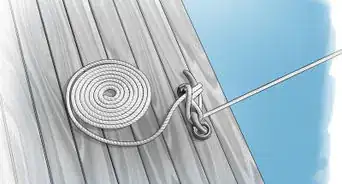



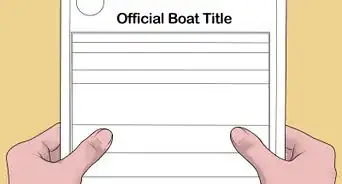






References
- ↑ https://www.maine.gov/ifw/docs/maine-boating-laws.pdf
- ↑ https://discoverthedinosaurs.com/is-60-mph-fast-for-a-boat-average-boat-speed-mph/
- ↑ https://tpwd.texas.gov/regulations/outdoor-annual/boating/personal-watercraft
- ↑ https://parks.ny.gov/documents/recreation/boating/2017NYSBoatersGuide.pdf
- ↑ https://www.maine.gov/ifw/docs/maine-boating-laws.pdf
- ↑ https://parks.ny.gov/documents/recreation/boating/2017NYSBoatersGuide.pdf
- ↑ https://www.maine.gov/ifw/docs/maine-boating-laws.pdf
- ↑ https://www.maine.gov/ifw/docs/maine-boating-laws.pdf
- ↑ https://www.maine.gov/ifw/docs/maine-boating-laws.pdf
- ↑ https://www.maine.gov/ifw/docs/maine-boating-laws.pdf
- ↑ https://discoverthedinosaurs.com/is-60-mph-fast-for-a-boat-average-boat-speed-mph/
- ↑ https://discoverthedinosaurs.com/is-60-mph-fast-for-a-boat-average-boat-speed-mph/
- ↑ https://uscgboating.org/library/accident-statistics/Recreational-Boating-Statistics-2021.pdf
- ↑ https://uscgboating.org/library/accident-statistics/Recreational-Boating-Statistics-2021.pdf
- ↑ https://www.uscgboating.org/images/420.PDF
- ↑ https://www.maine.gov/ifw/docs/maine-boating-laws.pdf
- ↑ https://www.uscgboating.org/images/420.PDF
- ↑ https://files.dnr.state.mn.us/rlp/regulations/boatwater/boatingguide.pdf
- ↑ https://www.uscgboating.org/images/420.PDF
About This Article

